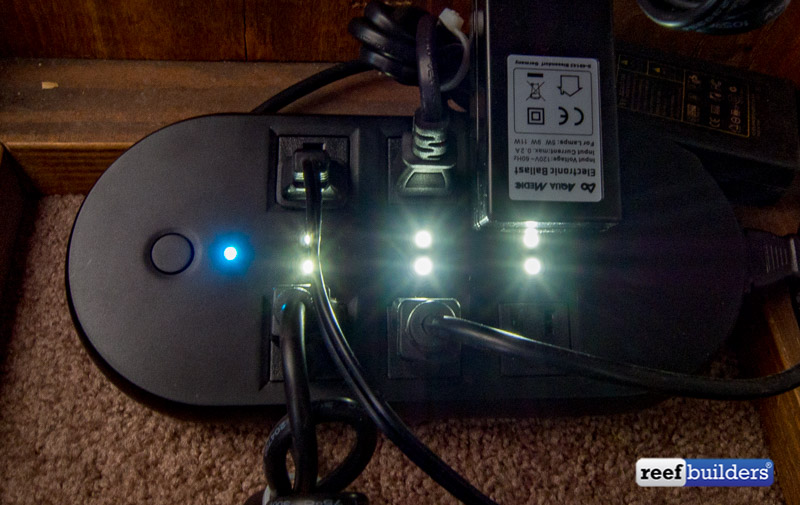Fishbit is an innovative new aquarium startup company that has been working for two years to bring to market a new kind of aquarium controller. The Fishbit system actually consists of two separate parts, a controller and a monitor, both of which are the easiest to use of any controller or monitor in the aquarium hobby today.
most aquarium controllers end up being glorified light timers
Let’s face it, the majority of fully fledged aquarium controllers end up being glorified light timers and basic monitors of aquarium parameters. This is not a fault of their expandability or versatility, there’s no comparing the Fishbit to an Apex when it comes to ‘doing it all’.
But the fact is that 99% percent of reefers and aquarists in general don’t need an aquarium controller to do everything. By and large, we just need a controller that is easy to use, with basic timing functions, simple reactions to pH and temperature, and most of all, we need it to be easy to setup and use on a daily basis.

If you’ve ever had to set up an Apex controller, or tried to get all your network settings adjusted so you can actually access it outside your home network, you know how involved it can be. Even if you know what you are doing you’ll be setting aside a chunk of time ironing out all the kinks, and don’t even get us started on having to run the required wired connection.
When it comes to ease of use, the Fishbit is in a league of its own. Setting up the Fishbit monitor and controller is a breath of fresh air, the process was so easy, streamlined and trouble free we actually uninstalled the whole thing and started over just to make sure it wasn’t a fluke.

All of the major aquarium controllers were built and released before the smartphone era reshaped how we interact with our world. By contrast the Fishbit was designed with our current smartphone world in mind, with a native application and fully wireless connectivity that responds quickly to every command.
To date Fishbit has only released a few dozen monitors and controllers as part of their beta testing but all users are saying the same thing; dead simple to use, easy to access, and it just does what it’s supposed to. Currently the Fishbit Controller Beta is somewhat rudimentary with only six outlets of control but the next fully fledged Fishbit controller has eight outlets of control, and eight 0-10v control channels will vastly expand the nascent platform’s controller capabilities.

Fishbit completely outclasses the competition with software
But where the Fishbit completely outclasses the competition is in the software. The native Fishbit application is nearly flawless, with the most simple user interface, clear indicators of outlet status and clear graphs of temperature, pH and salinity trends. One of the surprisingly well-executed features of the Fishbit are the thoughtful alerts which pop up on our phone only occasionally, and not every single minute that one thing is slightly off.
To be fair, with less than 50 units out in the wild Fishbit still has a long way to go to prove what the controller and monitor can do, and that they are reliable alternatives to the current status quo. There’s a huge difference between building a couple dozen, thoroughly-tested beta controllers, and shipping out a couple dozen controllers every week. We really hope that Fishbit continues its rate of improvements of the controller, monitor and application features because it gives us goosebumps to think where the whole ecosystem will be in a couple years time.
Fishbit is the future of aquarium controllers
The Kickstarter for Version 1 of the Fishbit controller and monitor has nine days left to go and it is gradually closing in on its funding goal. We’re currently using our controller and monitor on different tanks so just remember that you can pick and choose your level of investment to precisely satisfy your aquarium needs. We’re keeping our fingers crossed that the Fishbit crowdfunding campaign is successful because the Fishbit is the future of aquarium controllers, and a readily available commercial version can’t come soon enough.



